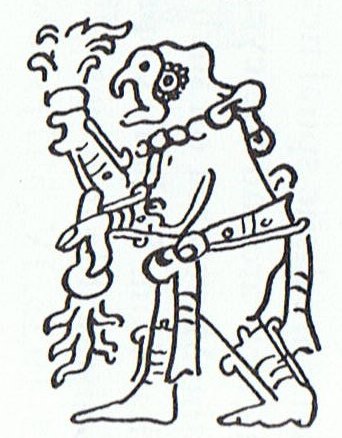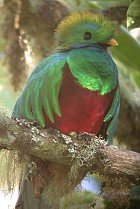332. The quartet of hua poporo 'berries'
|

|
|
hua poporo |
were beginning when the Full Moon was at Heka (Ga7-32)
... The Heka triplet is where we otherwise would have expected to see a bright single star representing Orion's head (when looking from a location in the northern hemisphere) ... λ and the two stars phi furnish an easy refutation of the popular error as to the apparent magnitude of the moon's disc, Colas writing of this in the Celestial Handbook of 1892: In looking at this triangle nobody would think that the moon could be inserted in it; but as the distance from λ to φ¹ is 27', and the distance from φ¹ to φ² is 33', it is a positive fact; the moon's mean apparent diameter being 31' 7''. This illusion, prevalent in all ages, has attracted the attention of many great men; Ptolemy, Roger Bacon, Kepler, and others having treated of it. The lunar disc, seen by the naked eye of an uninstructed observer, appears, as it is frequently expressed 'about the size of a dinner-plate', but should be seen as only equal to a peppercorn ...
and they continued up to the day when the Sun reached the right ascension line at Vega (Ga8-14), which was 16 right ascension days later:

And they seem to represent a contrast to the previous '6-berry' structure:
|

|
93 |

|
|
Ga4-7 (90) |
Ga7-15 (184) |
Hua poporo began where Antares returned to visibility after having been too close to the Sun for observation, i.e. 16 nights after Ga7-16:
... Like the sun, chiefs of the highest tabus - those who are called 'gods', 'fire', 'heat', and 'raging blazes' - cannot be gazed directly upon without injury. The lowly commoner prostrates before them face to the ground, the position assumed by victims on the platforms of human sacrifice. Such a one is called makawela, 'burnt eyes' ...
| CLOSE TO THE SUN: |
| EQUINOX (265) |
9-23 |
9-24 |
9-25 |
| OCT 7 (280) |
8 (*201) |
9 |
10 |
 |
 |
 |
 |
| Ga7-31 (200) |
Ga7-32 (185 + 16) |
Ga7-33 |
Ga7-34 |
| LESATH (Sting) = υ Scorpii, δ Arae (264.7), CHOO (Club) = α Arae (264.9) |
Al Shaula-17
ALWAID (Mother Camels) = β Draconis, MAASYM (Wrist) = λ Herculis (265.1), SHAULA (Sting) = λ Scorpii (265.3), KUMA = ν Draconis (265.6), σ Arae (265.9)
HAMAL (α ARIETIS)
|
RAS ALHAGUE = α Ophiuchi (266.1), SARGAS = θ Scorpii (266.3), μ Ophiuchi, π Arae (266.5), NAN HAE (Southern Sea) = ξ Serpentis (266.6), AL DHĪLI (The Wolf) = ω Draconis, ι Herculis (266.7) |
λ Arae (267.1), GIRTAB (Seizer) = κ Scorpii, ο Serpentis (267.6), DSIBAN (Wolf Pair) = ψ Draconis (267.9) |
| Dec 10 (*264) |
11 (345) |
12 |
13 |
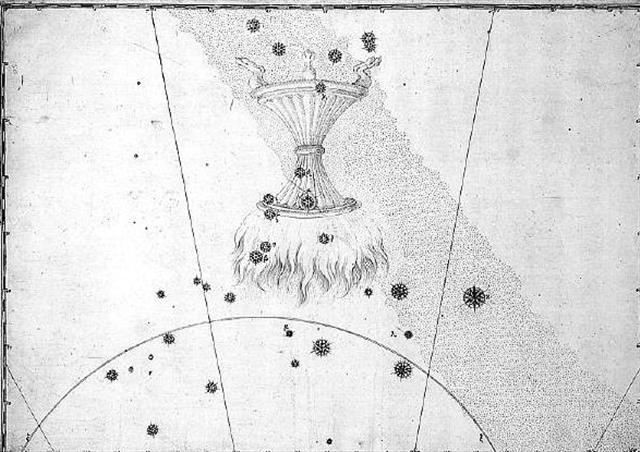 |
| °Dec 6 (*260) |
7 (341) |
8 |
9 |
| 'Nov 13 (*237) |
14 |
15 |
16 (320) |
| Tagaroa Uri 30 (303) |
"Oct 31 (*224) |
"Nov 1 (305) |
Ko Ruti 2 |
| NAKSHATRA DATES: |
| 3-24 |
JULIAN EQUINOX |
3-26 (85) |
3-27 |
| APRIL 8 |
9 (*19) |
10 (100) |
11 |
| KHUFU |
KHAFRE |
MENKAURE |
ο Aurigae (85.8), γ Leporis (85.9)
YANG MUN (α Lupi)
|
| MINTAKA (Belt) = δ Orionis, υ Orionis (82.4), χ Aurigae (82.5), ε Columbae (82.6)
*82 = *56 + *16 + *10 |
Al Hak'ah-3 (Brand) / Mrigashīrsha-5 (Stag's Head) / Turtle Head-20 (Monkey) / Mas-tab-ba-tur-tur (Little Twins)
ARNEB = α Leporis, Crab Nebula = M1 Tauri (83.0, φ¹ Orionis (83.1), HEKA = λ Orionis, Orion Nebula = M42 (83.2), φ² Orionis (83.6), ALNILAM (String of Pearls) = ε Orionis (83.7) |
Three Stars-21 (Gibbon) / Shur-narkabti-sha-shūtū-6 (Star in the Bull towards the south) / ANA-IVA-9 (Pillar of exit)
HEAVENLY GATE = ζ Tauri, ν Columbae (84.0), ω Orionis (84.2), ALNITAK (Girdle) = ζ Orionis, PHAKT (Phaet) = α Columbae (84.7) |
| June 11 |
12 |
13 (*84) |
14 (165) |
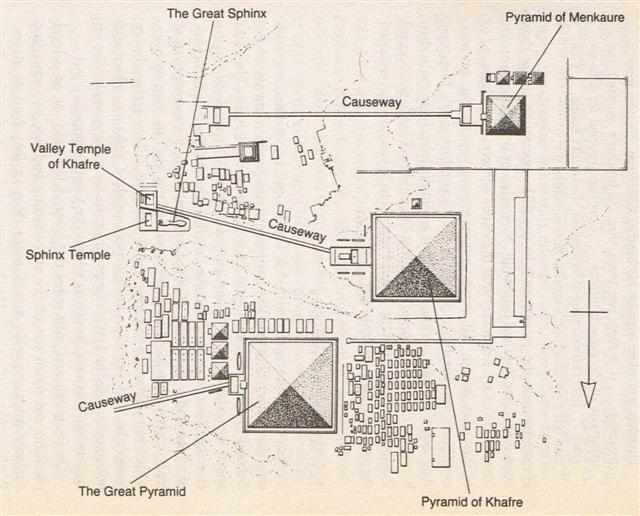 |
| °June 7 |
8 |
9 (*80) |
10 (161) |
| 'May 15 (*420) |
16 (136) |
17 |
18 (*58) |
| "May 1 |
Vaitu Potu 2 (122) |
3 (*43) |
4 (124) |
 |
 |
 |
 |
| Ga1-18 |
Ga1-19 |
Ga1-20 |
Ga1-21 |
| CLOSE TO THE SUN: |
| 9-26 |
9-27 (*190) |
9-28 |
9-29 |
9-30 (273 = 3 * 91) |
| OCT 11 (*204) |
12 |
13 |
14 |
15 (288) |
 |
 |
 |
 |
 |
| Ga8-1 (204) |
Ga8-2 |
Ga8-3 |
Ga8-4 |
Ga8-5 |
| KELB ALRAI (Dog of the Shepherd) = β Ophiuchi, μ Arae (268.1), KEW HO (Nine Rivers) = μ Herculis (268.6), η Pavonis (268.7), APOLLYON = ι Scorpii (268.9) |
MULIPHEN (Oaths) = γ Ophiuchi (269.0), BASANISMUS = G Scorpii (269.5), PHERKARD (Dim One of the Two Calves) = δ Ursae Minoris (269.9) |
PTOLEMY CLUSTER = M7 Scorpii (270.5), GRUMIUM (Lower Jaw) = ξ Draconis (270.9) |
RUKBALGETHI GENUBI (Bending Claw) = θ Herculis (271.1), ξ Herculis (271.5), ETAMIN (Head) = γ Draconis, ν Herculis (271.7), ν Ophiuchi (271.8) |
Cat's Eye = NGC6543 Draconis (272.2), ζ Serpentis (272.4), τ Ophiuchi (272.9) |
| Dec 14 (*268) |
15 |
16 (350) |
17 |
18 |
 |
| °Dec 10 (*264) |
11 (345) |
12 |
13 |
14 |
| 'Nov 17 (*241) |
18 |
19 |
20 (324) |
21 |
| "Nov 3 (*227) |
4 |
Ko Ruti 5 |
6 (310) |
7 |
| NAKSHATRA DATES: |
| 3-28 |
3-29 |
3-30 |
3-31 (*375) |
4-1 (91) |
| APRIL 12 |
13 (468) |
14 (104) |
15 (*390) |
16 (*26) |
| μ Columbae, SAIPH (Sword) = κ Orionis (86.5), τ Aurigae, ζ Leporis (86.6) |
υ Aurigae (87.1), ν Aurigae (87.2), WEZN (Weight) = β Columbae, δ Leporis (87.7), TZE (Son) = λ Columbae (87.9) |
Ardra-6 (The Moist One) / ANA-VARU-8 (Pillar to sit by)
χ¹ Orionis, ξ Aurigae (88.1), BETELGEUZE (House of the Giant) = α Orionis (88.3), ξ Columbae (88.5), σ Columbae (88.7)
ZUBEN ELGENUBI (α Librae)
|
η Leporis (89.0), PRAJA-PĀTI (Lord of Created Beings) = δ Aurigae, MENKALINAN (Shoulder of the Rein-holder) = β Aurigae, MAHASHIM (Wrist) = θ Aurigae, and γ Columbae (89.3), π Aurigae (89.4), η Columbae (89.7) |
μ Orionis (90.3), χ² Orionis (90.5) |
| June 15 |
16 |
17 (168 = 80 + 88) |
18 |
19 (*90) |

... The earliest depiction that has been linked to the constellation of Orion is a prehistoric (Aurignacian) mammoth ivory carving found in a cave in the Ach valley in Germany in 1979. Archaeologists have estimated it to have been fashioned approximately 32,000 to 38,000 years ago ... The artist cut, smoothed and carved one side (A) and finely notched the other side (B) and the edges. Side A contains the half-relief of an anthropoidal figure, either human or a human-feline hybrid, known as the 'adorant' because its arms are raised as if in an act of worship.
| Egyptian jubilation |
 |
Phoenician he |
 |
Greek epsilon |
Ε (ε) |
|
Wikipedia points at the Egyptian gesture with arms held high as a Sign of jubilation, which may have been the origin (via Phoenician he) of epsilon.


|
On side B together with the four edges is a series of notches that are clearly set in an intentional pattern. The edges contain a total of 39 notches in groups of 6, 13, 7 and 13. A further 49 notches on side B are arranged in four vertical lines of 13, 10, 12 and 13 respectively plus a further notch that could be in either of the middle two lines ... The grouping of the notches on the plate suggests a time-related sequence. The total number of notches (88) not only coincides with the number of days in 3 lunations (88.5) but also approximately with the number of days when the star Betelgeuse (α Ori) disappeared from view each year between its heliacal set (about 14 days before the spring equinox around 33,000 BP) and its heliacal rise (approximately 19 days before the summer solstice).
Conversely, the nine-month period when Orion was visible in the sky approximately matched the duration of human pregnancy, and the timing of the heliacal rise in early summer would have facilitated a ‘rule of thumb’ whereby, by timing conception close to the reappearance of the constellation, it could be ensured that a birth would take place after the severe winter half-year, but leaving enough time for sufficient nutrition of the baby before the beginning of the next winter. There is a resemblance between the anthropoid on side A and the constellation Orion. None of these factors is convincing when taken in isolation, because of the high probability that apparently significant structural and numerical coincidences might have arisen fortuitously. However, taken together they suggest that the anthropoid represented an asterism equivalent to today’s constellation of Orion, and that the ivory plate as a whole related to a system of time reckoning linked to the moon and to human pregnancy. If so, then ethnographic comparisons would suggest that the Geißenklösterle culture related their ‘anthropoid’ asterism to perceived cycles of cosmic power and fertility ...
|
| °June 11 |
12 |
13 (164) |
14 |
15 (*86) |
| 'May 19 (*59) |
20 |
21 (141) |
22 |
23 (*63) |
| "May 5 |
Vaitu Potu 6 |
7 (127) |
8 |
9 (*49) |
 |
 |
 |
 |
 |
| Ga1-22 |
Ga1-23 |
Ga1-24 |
Ga1-25 |
Ga1-26 |
| 10-1 |
10-2 (275) |
10-3 |
| OCT 16 |
17 (290) |
18 (*211) |
 |
 |
 |
| Ga8-6 (209) |
Ga8-7 |
Ga8-8 |
|
Winnowing Basket-7 (Leopard)
18h (273.4)
NASH (Point) = γ Sagittarii (273.7), θ Arae (273.8) |
ZHŌNGSHĀN = ο Herculis (274.0), π Pavonis (274.6) |
ι Pavonis (275.1), POLIS = μ Sagittarii (275.9)
MENKAR (α Ceti)
|
| Dec 19 (*273) |
20 (354) |
SOLSTICE |

... As has already been mentioned, the Delphians worshipped Dionysus once a year as the new-born child, Liknites, 'the Child in the Harvest Basket', which was a shovel-shaped basket of rush and osier used as a harvest basket, a cradle, a manger, and a winnowing-fan for tossing the grain up into the air against the wind, to separate it from the chaff. The worship of the Divine Child was established in Minoan Crete, its most famous early home in Europe. In 1903, on the site of the temple of Dictaean Zeues - the Zeus who was yearly born in Rhea's cave at Dicte near Cnossos, where Pythagoras spent 'thrice nine hallowed days' [27] of his initiation - was found a Greek hymn which seems to preserve the original Minoan formula in which the gypsum-powdered, sword-dancing Curetes, or tutors, saluted the Child at his birthday feast. In it he is hailed as 'the Cronian one' who comes yearly to Dicte mounted on a sow and escorted by a spirit-throng, and begged for peace and plenty as a reward for their joyful leaps ... |
| °Dec 15 (*269) |
16 (350) |
17 |
| 'Nov 22 (*246) |
23 |
24 (328) |
| "Nov 8 (*232) |
9 |
Ko Ruti 10 (314) |
| NAKSHATRA DATES: |
| 4-2 (92) |
4-3 (*378 → Saturn) |
4-4 |
| APRIL 17 (107) |
18 (*393) |
19 (*29) |
| 6h (91.3)
ν Orionis (91.4), θ Columbae (91.5), π Columbae (91.6) |
ξ Orionis (92.5) |
Al Han'ah-4 (Brand) / Maru-sha-pu-u-mash-mashu-7 (Front of the Mouth of the Twins)
TEJAT PRIOR = η Gemini (93.4), γ Monocerotis (93.5), κ Aurigae (93.6), κ Columbae (93.8) |
| June 20 (*91) |
SOLSTICE |
22 (173) |
| °June 16 (*87) |
17 (168) |
18 |
| 'May 24 (*64) |
25 |
26 (146) |
| "May 10 (*50) |
Vaitu Potu 11 |
12 (132) |
 |
 |
 |
| Ga1-27 |
Ga1-28 |
Ga1-29 |
| 10-4 (277) |
10-5 |
10-6 |
| OCT 19 |
20 (293) |
21 (*214) |
 |
 |
 |
| Ga8-9 |
Ga8-10 |
Ga8-11 (214) |
| η Sagittarii (276.9) |
Purva Ashadha-20 (Winnowing Basket) |
| KAUS MEDIUS = δ Sagittarii, κ Lyrae (277.5), TUNG HAE (Heavenly Eastern Sea) = η Serpentis (277.7), SHAOU PIH (Minor Minister) = φ Draconis (277.8), KWEI SHE = χ Draconis (277.9) |
φ Oct. (278.1), KAUS AUSTRALIS = ε Sagittarii (278.3), ξ Pavonis (278.4), AL ATHFAR (The Talons of the Falling Eagle) = μ Lyrae (278.6) |
| Dec 22 |
23 (357) |
CHRISTMAS EVE |
.jpg) |
| °Dec 18 (*272) |
19 |
20 (354) |
| 'Nov 25 (*249) |
26 (330) |
27 |
| "Nov 11 (315) |
Ko Ruti 12 (*235) |
13 |
| NAKSHATRA DATES: |
| 4-5 (95) |
4-6 |
4-7 |
| APRIL 20 (*30) |
21 (111) |
22 (477) |
| FURUD = ζ Canis Majoris (94.9) |
Well-22 (Tapir) / Arkū-sha-pu-u-mash-mashu-8 (Back of the Mouth of the Twins)
δ Columbae (95.2), TEJAT POSTERIOR = μ Gemini, MIRZAM (The Roarer) = β Canis Majoris (95.4), CANOPUS = α Carinae (95.6), ε Monocerotis (95.7), ψ1 Aurigae (95.9) |
no star listed (96) |
| June 23 (*94) |
ST JOHN'S DAY (*460) |
25 (176) |
| °June 19 |
20 (*91) |
SOLSTICE |
| 'May 27 |
28 (*68) |
29 (149) |
| "May 13 (133) |
Vaitu Potu 14 (*54) |
15 (500) |
 |
 |
 |
| Ga1-30 |
Ga2-1 |
Ga2-2 |
The Mayan raindrop clouds were formed like tears of grapes:
According to my reconstructions the bird of sunset - the Owl (Muan, Moan, Muwan) - came 65 days before the end of the year; and God L had not only cigarettes but also a Muwan bird headdress:
... The setting of the first of these three stones of Creation is shown on an extraordinary pot [cfr picture below]. The scene on this pot depicts six gods seated in front of a wizened personage whom scholars have dubbed God L - one of the principal denizens of the Otherworld. Large bundles, two marked with a Nine-Star-Over-Earth glyph, rest on the floor in front of them. The aged God L, complete with his cigarette and Muwan Bird headdress, sits inside a house made of mountain-monsters with a crocodile on its roof. Behind him is a bundle called ikatz, 'burden', representing the weightiness of his office. He sits on the jaguar-covered throne mentioned in the Quirigua account of Creation.
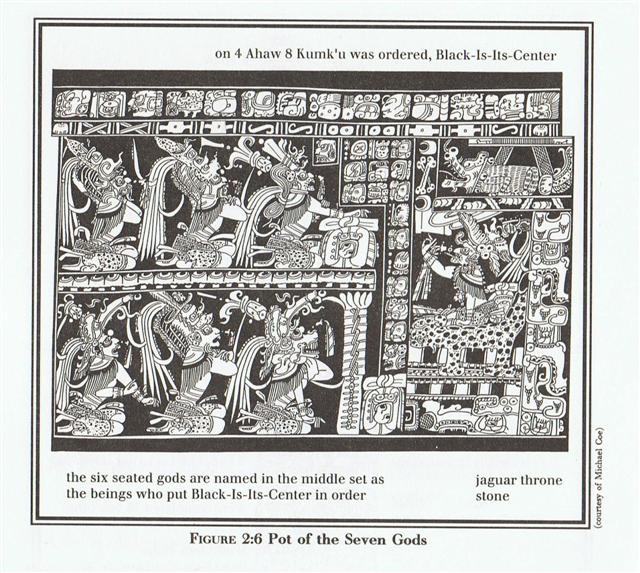
There were 3 stones to be put in order at the beginning of this creation, and the first of them was at the Jaguar throne:
... The Jaguar Paddler and the Stingray Paddler seated a stone. / It happened at Na Ho-Chan, the Jaguar-throne-stone.
The Black-House-Red-God seated a stone. / It happened at the Earth Partition, the Snake-throne-stone.
Itzamna set the stone at the Waterlily-throne-stone ...
I guess these 3 stones could have represented the 3 'stones' of the Belt of Orion (Tau-toru) and if so then the 2nd (central) of them could correspond to Alnilam (String of Pearls), and it was said to be at the Earth Partition - a name suggesting a similarity with the other creation at the shell of the Tortoise where the First Father emerged from its cracked shell, where it broke apart, separated:

If 'black-is-the-center' should refer to the place of Khufu on the Gizah plateau, then we could associate this place with right ascension day 264 (where the Sun was at α Arae and the Full Moon at Mintaka). At the time of Bharani the once upon a time pole star Vega would have been at Ko Ruti 16 (320 = *281 - *41 + 80).
| 9-7 (250) |
15 |
9-23 (266) |
15 |
10-9 (282) |
 |
 |
 |
| *249 |
*265 |
*281 |
| Antares |
Shaula |
Vega |
| Tagaroa Uri 15 (288) |
2 * 16 = 32 |

Barthel has pointed out that breadfruits were counted in fours: ... in the Marquesas they counted the fruits from the breadfruit trees in fours, perhaps thereby explaining the four 'berries' in this type of glyph. The breadfruit did not grow on Easter Island but the berries of Solanum nigrum were eaten in times of famine. Barthel compares with the word koporo on Mangareva. The poor crop of breadfruits at the end of the harvest season was called mei-koporo, where mei stood for breadfruit. On other islands breadfruit was called kuru, except in the Marquesas which also used the word mei. Koporo was a species of nightshade ...
And we should remember the dripping dew of the breadfruit tree, growing from the 'head' of the old generation: ... When the man, Ulu, returned to his wife from his visit to the temple at Puueo, he said, 'I have heard the voice of the noble Mo'o, and he has told me that tonight, as soon as darkness draws over the sea and the fires of the volcano goddess, Pele, light the clouds over the crater of Mount Kilauea, the black cloth will cover my head. And when the breath has gone from my body and my spirit has departed to the realms of the dead, you are to bury my head carefully near our spring of running water. Plant my heart and entrails near the door of the house. My feet, legs, and arms, hide in the same manner. Then lie down upon the couch where the two of us have reposed so often, listen carefully throughout the night, and do not go forth before the sun has reddened the morning sky. If, in the silence of the night, you should hear noises as of falling leaves and flowers, and afterward as of heavy fruit dropping to the ground, you will know that my prayer has been granted: the life of our little boy will be saved.' And having said that, Ulu fell on his face and died.
His wife sang a dirge of lament, but did precisely as she was told, and in the morning she found her house surrounded by a perfect thicket of vegetation. 'Before the door,' we are told in Thomas Thrum's rendition of the legend, 'on the very spot where she had buried her husband's heart, there grew a stately tree covered over with broad, green leaves dripping with dew and shining in the early sunlight, while on the grass lay the ripe, round fruit, where it had fallen from the branches above. And this tree she called Ulu (breadfruit) in honor of her husband ...
And in the 4th glyph for Saturday, in the H text describing the week, there is a hua poporo:


Makoi (Saturn) was also the name of a Tree:
| [E:31] he noho he hakaora.i ahu akapu.erua raa |
They made camp and rested at Ahu Akapu for two days. |
| i te angahuru te maiva. o te raa o hora iti |
On the twenty-ninth day of the month of August ('Hora Iti') |
| Hagahuru. Ten (agahuru, hagauru). P Mq.: onohuú, okohuú, id. Ta.: ahuru. id. Churchill. The Maori recognized two main divisions of the year: winter or takurua, a name for Sirius which then shone as morning star, and summer, raumati or o-rongo-nui, 'of the great Rongo', god of agriculture. They occasionally recognized spring as the digging season koanga, from ko, the digging stick or spade. The autumn or harvest season was usually spoken of as ngahuru, 'tenth' (month), although it was considered to include also the last two months of the year. Mahuru was the personification of spring. Makemson.
The word maiva could possibly be mai-iva, where mai = sick and iva = 9, in a way possibly implying the day which was number 10 (hangahuru) + mai(i)va = 29. When the Sun was in August (Hora Iti) then the Full Moon (Hotu) was in February and there was no day 29 in Tehetu'upú. Furthermore, Tehetu'upú 9 (40) could have been alluded to (2-9) because in Roman times this would have been day 40 + 14 = 54 ('February 23 = Terminalia). The Full Moon was in Tehetu'upú 28 (= 9 + 19) when the Sun reached the 'plumb line' between the Fox and Spica.
... There is a further motivation of the same in the kava taken immediately after the chief's by the herald, a representative of the land. This drinking is 'to kick', rabeta, the chief's kava. Raberabe, the same reduplicated version, means 'a sickness', the result of kicking accidently against a 'drau-ni-kau'... The herald here takes the effects on himself: drau-ni-kau is the common name for 'sorcery'... |
| i oho ai ki pu pakakina.he tuu he noho he na(-) |
they went to Pu Pakakina. They arrived, remained there, and gave |
| pe i te ingoa ko pu pakakina.a Ira.he noho |
the name 'Pu Pakakina A Ira'. They remained |
| etahi marama.i pu pakakina. |
one month in Pu Pakakina. |
| he ki a Ira.kia Raparenga.kia Nonoma to(-) |
Ira said to Raparenga and Nonoma, |
| koa.ka oho korua hokorua ki hanga te Pa(-) |
Go to Hanga Te Pau, you two companions, |
| u.ka too mai i te makoi.he ki hokoou a Ira. |
and bring the Makoi back (wordplay on 'fruit of the tree' and 'name of the explorer'?). |
| Too. 1. To adopt, to take, to acquire, to admit, to accept, to gather, to dispose, to seize, to pull up, to extirpate, stripped, to withdraw, to intercept, to frustrate, to touch, to employ, to serve; tae too, to renounce. Mq.: too, to take, to receive, to accept, to adopt, to seize, to pull up. 2. Raa too, noon. 3. Numeral prefix. P Mgv.: toko, id. Mq.: toko, too, id. Ta.: too, id. Samoa and Futuna use to'a and toka, Tonga and Niuē use toko, and the remainder of Polynesia uses the latter form. Tooa: kai tooa, intact, entire, whole; paea tooa, to deprive. Churchill. Makoi. The tree which on T. was called miro, Thespesia populnea. Van Tilburg. Makoikoi, kidney T. Churchill. |
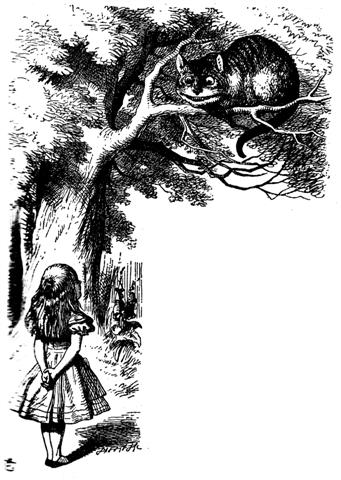
... And this is when a maiden heard of it, the daughter of a lord. Blood Gatherer is the name of her father, and Blood Moon is the name of the maiden. And when he heard the account of the fruit of the tree, her father retold it. And she was amazed at the account: I'm not acquainted with that tree they talk about. It's fruit is truly sweet! they say, I hear, she said. Next, she went all alone and arrived where the tree stood. It stood at the Place of Ball Game Sacrifice. What? Well! What's the fruit of this tree? Shouldn't this tree bear something sweet? They shouldn't die, they shouldn't be wasted. Should I pick one? said the maiden.
And then the bone spoke; it was there in the fork of the tree: Why do you want a mere bone, a round thing in the branches of a tree? said the head of One Hunaphu when it spoke to the maiden. You don't want it, she was told. I do want it, said the maiden. Very well. Stretch out your right hand here, so I can see it, said the bone. Yes, said the maiden. She stretched out her right hand, up there in front of the bone. And then the bone spit out its saliva, which landed squarely in the hand of the maiden.
And then she looked in her hand, she inspected it right away, but the bone's saliva wasn't in her hand. It is just a sign I have given you, my saliva, my spittle. This, my head, has nothing on it - just bone, nothing of meat. It's just the same with the head of a great lord: it's just the flesh that makes his face look good. And when he dies, people get frightened by his bones. After that, his son is like his saliva, his spittle, in his being, whether it be the son of a lord or the son of a craftsman, an orator. The father does not disappear, but goes on being fulfilled. Neither dimmed nor destroyed is the face of a lord, a warrior, craftsman, an orator. Rather, he will leave his daughters and sons. So it is that I have done likewise through you. Now go up there on the face of the earth; you will not die. Keep the word. So be it, said the head of One and Seven Hunaphu - they were of one mind when they did it.
The hua poporo season appears to have begun 265 days after 0h, i.e. in December 11 (345) which was only 10 days before the solstice, while on Tahiti breadfruits were very scarce during the 4 months around the December solstice:
... In Tahiti the bread-fruit can be gathered for seven months, for the other five there is none: for about two months before and after the southern solstice it is very scarce, but from March to August exceedingly plentiful. This season is called pa-uru (uru = 'bread-fruit'). The recurring scarcity of bread-fruit shewed the changes in the course of the year, but the Pleiades afforded a surer limit.
The hua poporo season according to the time-space of Bharani should, however, have begun around 41 days earlier, in Tagaroa Uri 31 (304), and 10 days later was Ko Ruti 10 (314 → π) with 50 days remaining to day 52 * 7 = 364. Taken altogether it seems reasonable to assume the Rei glyphs in the G text indicated the season for good sailing conditions, when the Pleiades were visible up above in the nights, because the Queen of Sailing was ruling from early summer to November (Ko Ruti).
... another Alcyone, daughter of Pleione, 'Queen of Sailing', by the oak-hero Atlas, was the mystical leader of the seven Pleiads. The heliacal rising of the Pleiads in May marked the beginning of the navigational year; their setting marked its end when (as Pliny notices in a passage about the halcyon) a remarkably cold North wind blows ...
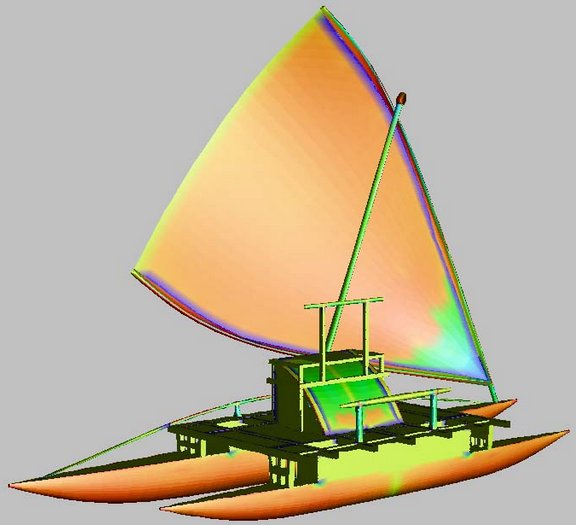
 |
 |
15 |
 |
89 |
 |
 |
46 |
 |
14 |
 |
| Ga1-30 |
Ga2-1 |
Ga2-18 |
Ga5-28 |
Ga5-28 |
Ga7-16 (185) |
Ga7-31 (200) |
|
4-5 (95) |
St John's Day |
July 11 |
Middle pillar |
Virgin's Girdle |
SEPT 22 (equinox) |
9-22 (equinox) |
|
13 (133) |
Vaitu Potu 14 |
31 (151) |
Hora Iti 29 (241) |
Hora Iti 29 (241) |
Tangaroa Uri 15 (288) |
30 (264 + 39) |
|
FURUD |
CANOPUS (95) |
(112) |
SPICA (202) |
SPICA (202) |
ANTARES (288 - 39) |
LESATH (264) |
|
108 days |
9 weeks |
|
171 days (= 9 * 19 = 471 - 300) |
Beginning 5 days before the winter solstice in June (172), viz. in the night of December 17 (351) - after Betelgeuze had been at the Full Moon in the preceding day - the Rei glyphs are accompained by another figure without arms, which I once upon a time (relying on Metoro) classified as nuku:
 nuku |
...After the food supplies had been brought on land, the two rulers, the king and the queen said, 'Drag the canoes on land and take them apart (so the wood can be used) to build houses and cover the roofs!' They dragged the two canoes on land and took them apart. After they had finished disassembling the canoes, Nuku covered all the houses ... [E:84]
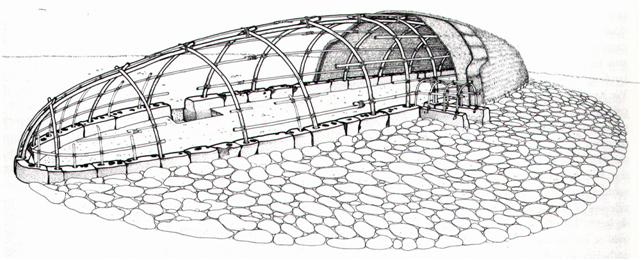
| Nuku.
1. Pau.: nuka, crowd, throng. Ta.: nuú, army, fleet. Mg.: nuku, a host, army. 2. Mgv.: nuku, land, country, place. Sa.: nu'u, district, territory, island. Churchill. |
... die Erde von den Chaldäern in der Gestalt eines umgestülpten Bootes vorgestellt wurde ... |
| CLOSE TO THE SUN: |
| 9-26 |
9-27 (*190) |
9-28 |
9-29 |
9-30 (273 = 3 * 91) |
| OCT 11 (*204) |
12 |
13 |
14 |
15 (288) |
 |
 |
 |
 |
 |
| Ga8-1 (204) |
Ga8-2 |
Ga8-3 |
Ga8-4 |
Ga8-5 |
| Dec 14 (*268) |
15 |
16 (350) |
17 |
18 |
| "Nov 3 (*227) |
4 |
Ko Ruti 5 |
6 (310) |
7 |
| NAKSHATRA DATES: |
| 3-28 |
3-29 |
3-30 |
3-31 (*375) |
4-1 (91) |
| APRIL 12 |
13 (468) |
14 (104) |
15 (*390) |
16 (*26) |
| μ Columbae, SAIPH (Sword) = κ Orionis (86.5), τ Aurigae, ζ Leporis (86.6) |
υ Aurigae (87.1), ν Aurigae (87.2), WEZN (Weight) = β Columbae, δ Leporis (87.7), TZE (Son) = λ Columbae (87.9) |
Ardra-6 (The Moist One) / ANA-VARU-8 (Pillar to sit by)
χ¹ Orionis, ξ Aurigae (88.1), BETELGEUZE (House of the Giant) = α Orionis (88.3), ξ Columbae (88.5), σ Columbae (88.7)
ZUBEN ELGENUBI (α Librae)
|
η Leporis (89.0), PRAJA-PĀTI (Lord of Created Beings) = δ Aurigae, MENKALINAN (Shoulder of the Rein-holder) = β Aurigae, MAHASHIM (Wrist) = θ Aurigae, and γ Columbae (89.3), π Aurigae (89.4), η Columbae (89.7) |
μ Orionis (90.3), χ² Orionis (90.5) |
| June 15 |
16 |
17 (168 = 80 + 88) |
18 |
19 (*90) |
| "May 5 |
Vaitu Potu 6 |
7 (127) |
8 |
9 (*49) |
 |
 |
 |
 |
 |
| Ga1-22 |
Ga1-23 |
Ga1-24 |
Ga1-25 |
Ga1-26 |
| CLOSE TO THE SUN: |
 |
 |
 |
| Ga8-6 (209) |
Ga8-7 |
Ga8-8 |
|
Winnowing Basket-7 (Leopard)
18h (273.4)
NASH (Point) = γ Sagittarii (273.7), θ Arae (273.8) |
ZHŌNGSHĀN = ο Herculis (274.0), π Pavonis (274.6) |
ι Pavonis (275.1), POLIS = μ Sagittarii (275.9)
MENKAR (α Ceti)
|
| Dec 19 (*273) |
20 (354) |
SOLSTICE |
| "Nov 8 (*232) |
9 |
Ko Ruti 10 (314) |
| NAKSHATRA DATES: |
| 4-2 (92) |
4-3 (*378 → Saturn) |
4-4 |
| APRIL 17 (107) |
18 (*393) |
19 (*29) |
| 6h (91.3)
ν Orionis (91.4), θ Columbae (91.5), π Columbae (91.6) |
ξ Orionis (92.5) |
Al Han'ah-4 (Brand) / Maru-sha-pu-u-mash-mashu-7 (Front of the Mouth of the Twins)
TEJAT PRIOR = η Gemini (93.4), γ Monocerotis (93.5), κ Aurigae (93.6), κ Columbae (93.8) |
| June 20 (*91) |
SOLSTICE |
22 (173) |
| "May 10 (*50) |
Vaitu Potu 11 |
12 (132) |
 |
 |
 |
| Ga1-27 |
Ga1-28 |
Ga1-29 |
| CLOSE TO THE SUN: |
 |
 |
 |
| Ga8-9 |
Ga8-10 |
Ga8-11 (214) |
| "Nov 11 (314 + 1) |
Ko Ruti 12 (*235) |
13 |
| NAKSHATRA DATES: |
| "May 13 (133) |
Vaitu Potu 14 (*54) |
15 (365 + 135 = 500) |
 |
 |
 |
| Ga1-30 |
Ga2-1 |
Ga2-2 |

|

























.jpg)













